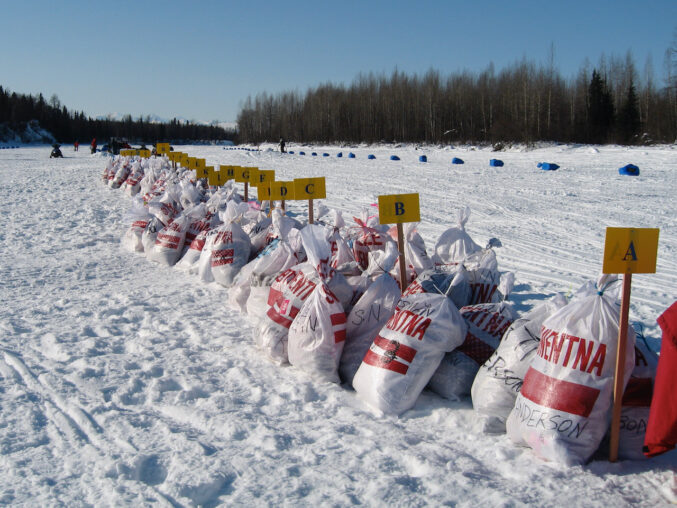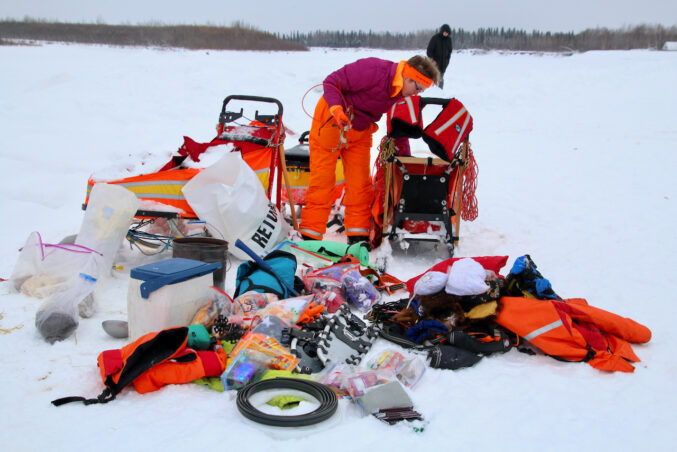What does it take to prepare for a long mission in an extreme environment? So far in this series, we have compared training for the Iditarod and astronaut training. We have learned about some differences and similarities between sleds and spacecraft. Now it’s time to talk about fuel and food. It must be getting close to Thanksgiving because the logistics of food preparation is on my mind! For the Iditarod’s canine athletes, food and fuel are one and the same.
Both NASA and long-distance mushers have carefully researched and tested the best fuels to use for their missions and races. The Space Launch System (SLS) that will fly the next astronauts back to the moon carries 730,000 gallons of chilled liquid hydrogen and oxygen. The fuel is stored in various stages of the rocket to be used at different points during the launch. Each kilogram of mass to be taken into space takes a minimum of 4.5 kg of liquid fuel to escape Earth’s gravity. This is why rockets are so huge!
Luckily, mushers can spread out their “fuel” shipments across the checkpoints. An Iditarod dog needs 10,000 to 12,000 calories a day. Mushers plan for 10,000 to 12,000 calories per day for sixteen dogs. If a musher completes the race in 12 days, that requires 2,304,000 calories! Meat, kibble, and snacks must be carefully prepared, sorted, and packed into 50-pound drop bags, which are labeled for each checkpoint. The drop bags are then shipped to the checkpoints ahead of time so that when the musher and the team arrive, the fuel for their race will be waiting for them.

Drop Bags sorted at Skwentna. Photo: Terrie Hanke
Delicious meals for humans get packed, too. In the extreme environments of isolated places, food has a psychological benefit. Astronauts and mushers pre-package their favorite foods in air-tight bags. Mushers drop their frozen food packs to reheat with the boiling water for the dogs’ food. Astronauts rehydrate and heat their food in designated cookers on the International Space Station. Many mushers look forward to the pies in Takotna and the pizza in Unalakleet, and they all have their favorite snacks. At the bottom of this photo of Meredith Mapes repacking during the 2022 Iditarod, you can spot the zip bags of her favorite trail foods.
In a similar way, astronauts work with NASA’S Space Food Systems Laboratory at Johnson Space Center to test and select the meals they will eat. The food must satisfy the calorie needs of the astronauts but also be tasty and enjoyable. I love this video of astronauts Jessica Meir and Andrew Morgan showing how they have dinner on the Space Station. Lentils and rice sound yummy to me!
Food and fuel preparation involves lots of planning and logistics. It’s another amazing way that the Iditarod has connections with space exploration. If you were an astronaut or a musher, what food would you bring? Email me at emailtheteacher@iditarod.com.



